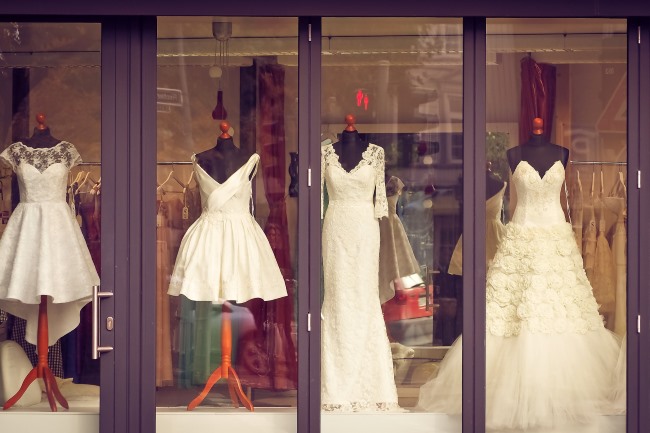How to Make a Wedding Bouquet with Real Flowers (6 Easy Steps)
Today on Love and Lavender we have a special guest. Patricia Hall is a florist and she is going to explain how to make a wedding bouquet in 6 easy steps!
Weddings are beautiful but potentially expensive affairs. One popular way that brides save money is by making their own bouquets. Each of the bride’s and bridesmaid’s bouquets can cost anywhere from $50 to $200 per bouquet. To avoid the expense of a quality bouquet or the disappointment of skimping on quality for price, many brides choose to make their own bouquets. Keep reading to learn how to make a bridal bouquet below.

(image source: http://www.abiaweddings.co.za)
DIY bridal bouquets not only save money, but they save time. Brides can have fresh flowers delivered directly to their home without having to take time out of their day to visit a florist. This delivery of flowers in its entirety is available fresher and cheaper than pre-made bouquets ordered directly from a florist.
The Basics of Bridal Bouquets
As a florist, I’ve worked with countless brides to perfect their vision of a dreamy bridal bouquet. Choosing the right flowers, colors, and style can be overwhelming, but following a few basic guidelines can go a long way in creating the perfect bouquet for your special day.
Size and Shape
The size and shape of your bouquet depend on your personal preference, but it is essential to consider your wedding dress’s style and the overall theme of your wedding. For instance, a delicate and modest dress pair well with a small bouquet, while a classic and grand gown may benefit from a more extravagant arrangement. Likewise, a casual beach wedding calls for a loose and flowing bouquet, while an indoor formal wedding could benefit from a more structured bouquet.
Flower Choices
The flowers you choose for your bridal bouquet should complement your dress and wedding theme. Popular choices include roses, peonies, lilies, and hydrangeas, but it’s essential to consider the season and availability of your chosen blooms. Don’t forget to incorporate greenery and texture to add depth and interest to your bouquet.
Color Palette
Your bouquet color palette should complement your wedding’s theme and the dress’s color. A classic all-white bouquet symbolizes purity and elegance, while a colorful bouquet could add a pop of vibrancy to your wedding. Choosing flowers in shades that complement or contrast with your bridesmaids’ dresses can create a harmonious look.
Accessories
Accessories such as ribbons, lace, or brooches can add a personal touch to your bridal bouquet. Consider incorporating family heirlooms or sentimental items to make your bouquet even more special.
Creating a stunning bridal bouquet takes time and consideration, but the result is worth it. With these basic guidelines in mind, you can create a bouquet that reflects your personal style and adds a beautiful touch to your wedding day.
Determining the Shape and Size of Your Bridal Bouquet
When it comes to creating a bridal bouquet, one of the most important decisions you’ll need to make is the shape and size. This will have a big impact on the overall look of the bouquet, as well as how it fits in with your wedding dress, your body type, and the theme of your wedding. Here are a few tips for determining the perfect shape and size for your bridal bouquet:
- Consider Your Dress: Look at the design and style of your wedding dress and think about what type of bouquet would complement it best. For example, a simpler dress might pair well with a more elaborate bouquet, while a heavily-beaded dress might call for a simpler, more delicate bouquet.
- Take Your Body Type into Account: Your bouquet should be proportional to your body type. If you’re petite, a large, cascading bouquet might overwhelm you, while a taller bride could carry a more dramatic, oversized bouquet more easily.
- Think About Your Wedding Style: What is the overall theme and style of your wedding? Your bouquet should fit in with this aesthetic. For example, a more traditional, classic wedding might call for a round, compact bouquet, while a bohemian or rustic wedding might be better suited to a loose, wildflower-inspired bouquet.
- Consider the Venue and Season: Where and when is your wedding taking place? A beach wedding might call for a more tropical-inspired bouquet, while a winter wedding might suit a bouquet featuring seasonal blooms like holly or pinecones.
- Work with Your Florist: Your florist is an expert in creating beautiful bouquets, so don’t be afraid to ask for their input. They can help you choose the perfect shape and size for your bouquet based on your preferences, your dress, and the overall style of your wedding.
How to Choose Flowers for a Wedding Bouquet

Choose your flower color freely. The traditional choice for most weddings is white. But brides should not feel constrained by formality. Recent trends embrace wedding flowers of all colors. Red roses, calla lilies or even poinsettias are popular for evening and winter weddings. For spring and fall weddings, bouquets of many colors make any bridal procession pop.
Many brides choose to make their wedding bouquets out of their favorite flower, birth flower or a flower that has special significance to the couple. Other brides choose to have fresh flowers delivered for their bouquet because they can choose the flowers that match their bridesmaids dresses or their wedding colors.
Contrasting colors are another popular choice. For example, pink flowers look beautiful with pink bridesmaids dresses. But blue flowers — on the opposite end of the color spectrum — attract more attention. Whether brides choose sentimental, contrasting or matching colors, purchasing a delivery of flowers allows custom bouquet in any single or variety of shades.
Brides may also play around with the color combination of the ribbon and the flowers. The traditional ribbon color is white. The pop of white against the green stem ties any bouquet into a dress. A ribbon that matches the shade of the bridesmaid’s dress will do the same.
But a bride can choose virtually any color for her ribbons. Green makes a bouquet look as if its stems are natural and not wrapped at all. The bouquet ribbon can also match the flowers themselves. Choose a ribbon that matches the color of the blossoms for uniformity. If there is a variety of color in the bouquet choose a ribbon that matches any of the flowers. Whichever color you match will make the corresponding blossoms pop.
No matter the blossom or ribbon color, restrict your delivery of flowers to long or medium-stems. To make the bouquet easy to hold you’ll need ample stem length to grip. The longer the stems the more elegant the bouquet. It is easier to trim down long stems from the fresh flowers delivered than to lengthen short stems or secure them to a bouquet. Tell your florist to leave you with as much length as possible. If the flowers you love grow in clusters, purchase the entire stalk or spray. Long flowers look beautiful cascading down from the front end of a flower bouquet.
Always purchase more flowers than you think you will need. Fresh flowers delivered and in hand may inspire new ideas or additional bouquets. First time bouquet makers may make mistakes or change their minds. Extra flowers allow for last minute changes without a last minute delivery of flowers.
Choosing the Right Flowers for Your Bridal Bouquet
To sum it up: the flowers you choose will depend on your personal style, the season, and the theme of your wedding.
Here are some important factors to consider when selecting flowers for your bridal bouquet:
- Seasonality: It’s important to choose flowers that are in season for your wedding date. Not only will it be more cost-effective, but it will also ensure the flowers are fresh and vibrant. For example, if you’re getting married in the spring, consider using tulips, peonies, or lilacs. For a summer wedding, you might opt for roses, sunflowers, or daisies.
- Color: Consider the color scheme of your wedding when choosing your bouquet. You may want to go with a monochromatic look or select complementary colors to make your bouquet really pop. Additionally, consider how the colors will look against your wedding dress and in the photos.
- Size and Shape: The size and shape of your bouquet will also depend on personal preference and the style of your dress. A trailing bouquet can be stunning with a ball gown, while a small, round bouquet may be perfect for a simpler dress. Additionally, consider the size of the flowers themselves; larger flowers may be overpowering in a small bouquet.
- Sentiment: Incorporate sentimental flowers that have special meaning to you and your significant other. Perhaps you want to include your grandmother’s favorite flower or the flowers from your first date. These special touches can make your bouquet even more meaningful.
| Factors to consider | Example |
|---|---|
| Seasonality | Tulips, peonies, or lilacs for spring; roses, sunflowers, or daisies for summer |
| Color | Consider the color scheme of your wedding |
| Size and Shape | Trailing bouquet for a ball gown, small round bouquet for a simpler dress |
| Sentiment | Incorporate sentimental flowers that have special meaning to you |
Popular flower choices
When it comes to selecting the flowers for your DIY wedding bouquet, there are countless options to consider. Here are some popular blooms that are often used in bridal bouquets:
Roses
Roses are timeless and romantic flowers, making them a classic choice for wedding bouquets. They come in various colors and sizes, allowing you to find the perfect match for your wedding theme. Whether you opt for elegant white roses, soft pastel hues, or bold and vibrant shades, roses can create a stunning focal point in your bouquet.
Peonies
Known for their lush and voluminous blooms, peonies are highly sought after in the world of weddings. These delicate flowers exude a sense of elegance and femininity. Peonies are available in a range of colors, including soft pinks, creamy whites, and vibrant corals, making them a versatile choice for any wedding palette.
Hydrangeas
Hydrangeas are popular for their large, full heads and abundant petals. They add a touch of whimsy and charm to any bouquet. These flowers come in various shades, such as blue, pink, purple, and white, allowing you to create a bouquet that matches your desired color scheme perfectly.
Baby’s Breath
Often used as a filler flower, a baby’s breath is delicate and airy, providing a lovely contrast to larger blooms. Its small white flowers create a soft and ethereal feel, and they can be used to add volume and texture to your bouquet. Baby’s breath is not only cost-effective but also a symbol of purity and innocence.
Greenery
Incorporating greenery into your bouquet adds depth, texture, and a touch of nature’s beauty. Popular choices for greenery include eucalyptus, ferns, ivy, and dusty miller. These greens provide a lush backdrop for your focal flowers and help to create a well-balanced and visually appealing bouquet.
Remember, the choice of flowers ultimately depends on your personal preferences, wedding theme, and color palette. Consider the seasonality and availability of your desired blooms as well. It’s always a good idea to consult with a florist or do some research to ensure the flowers you choose are suitable for your wedding date.
How to Make A Bridal Bouquet For Your Wedding

Supplies to make your bouquet:
- Fresh flowers delivered
- Flower tape
- Thick ribbon
- Crystal-headed pin
- Hairspray
1 – Remove the delivery of flowers from their package
Discard any flowers that are damaged or discolored. Use a clean pair of pruning shears to cut off the leaves on the stems at the base of the leaf stem where it meets the flower stem. Discard all of the trimmings or scatter them on top of your compost pile.
2 – Gather four or five blossoms
Hold the blossoms on their stems just below the blossom head. In general, the largest blossoms look best in the center of the bouquet. Next, gather blossoms two or three at a time to build out the bouquet. Retain a secure but gently grip on the stems just below the blossoms.
3 – Finish the bouquet with an outer ring
Large or small leaves give the bouquet a rustic look. Flowers work beautifully. Make the outer ring slightly lower — about 1/2-inch — than the main bunch. Angle the heads so that they face slightly out instead of straight up. Attach any cascading leaves or flowers to the front of the bouquet as a last step. Keep a firm grip on the bouquet while making the additions.
4 – Wrap flower tape around the stems
Start roughly one inch below the flower heads. Spiral the tape around and around the stems until you reach a point roughly 2 to 3 inches above the ends of the stems or wherever the ribbon will end.
5 – Wrap the ribbon around the flowers
Start one-third of the way down the stem. Wrap the ribbon up towards the blossoms. Overlap the spread of the flowers — where the stems begin to bend outward — by 1/2 inch. Then wrap down to the base of the flower tape. Secure the end of the ribbon with a crystal pin inserted into the stems.
6 – Spray the flower heads with hairspray
Spray with hairspray and let dry for a few minutes. Fill a vase with enough water to cover the stem ends, but not the ribbon just above it. Place the bouquet in the vase until the wedding day.
Expressing Your Unique Style with Your DIY Bouquet

Creating a DIY wedding bouquet allows you to infuse your own personal style into your special day. Here are a few ideas to help you express your unique taste:
Adding Accents
Consider adding accents to your bouquet to make it truly stand out. You can incorporate elements such as feathers, crystals, pearls, or even succulents for a modern and trendy touch. These embellishments can add an extra layer of sophistication and personality to your bouquet.
Ribbons and Wraps
The ribbon or wrap you choose to secure your bouquet can make a significant impact on its overall look. Opt for a ribbon that matches your wedding color scheme or choose a luxurious silk ribbon for an elegant and refined touch. Experiment with different wrapping techniques, such as crisscrossing the ribbon or creating a cascading effect, to add visual interest.
Personalized Details
Infuse your bouquet with sentimental value by adding personalized details. Consider incorporating a family heirloom, such as a brooch or a locket, into the bouquet. This adds a touch of nostalgia and allows you to carry a piece of your loved ones with you as you walk down the aisle.
Unique Shapes and Styles
Don’t be afraid to experiment with different bouquet shapes and styles. From traditional round bouquets to cascading or asymmetrical designs, the possibilities are endless. Research different bouquet styles and find inspiration from bridal magazines, Pinterest boards, or floral design websites to discover a style that resonates with your vision and personality.
About the Author
Patricia Hall works part-time for Serenata Flowers an online florist in UK and loves to surround herself with flowers at any given point of time. Even in her free time she loves to involve herself with everything flora and fauna.
‘To me there is nothing more beautiful and global as the language of flowers – it is the easiest to understand all around the world in the same way. That is one reason why I truly admire flowers for what they represent in some ways – unity of all mankind!’

Meredith
Despite her dreamy wedding blogger lifestyle, Meredith's day job is running ClassicVeils.com and a full-time mom to an active toddler. If she could, Meredith would spend her days taking cruises, helping animals in need, and watching Big Brother!







Woulderful! Love purple.
How long before the big day should this be done?
I love how you went into choosing the flowers. SO much great information! I would love to link to this tutorial if you didn’t mind.
What wonderful advice–I’m bookmarking this for future reference!